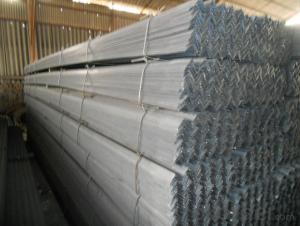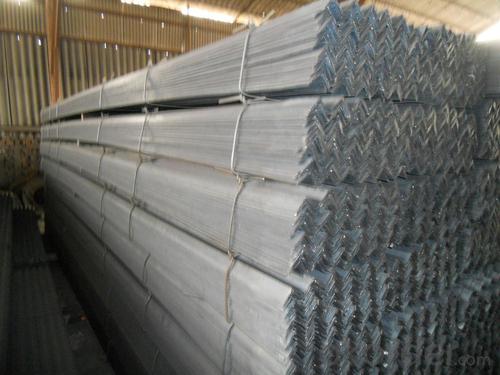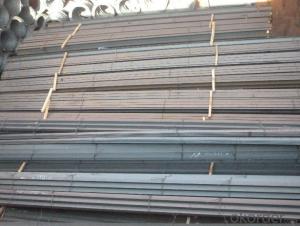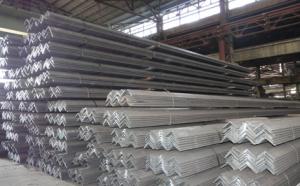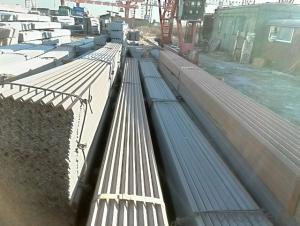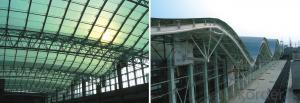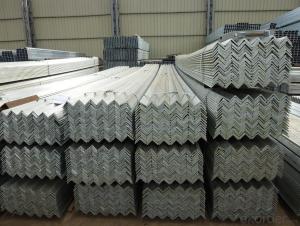Prime Hot Rolled Angle Steel For Steel Structure
- Loading Port:
- China main port
- Payment Terms:
- TT OR LC
- Min Order Qty:
- 100 m.t.
- Supply Capability:
- 5000 m.t./month
OKorder Service Pledge
OKorder Financial Service
You Might Also Like
Product Description:
OKorder is offering Prime Hot Rolled Angle Steel For Steel Structure at great prices with worldwide shipping. Our supplier is a world-class manufacturer of steel, with our products utilized the world over. OKorder annually supplies products to African, South American and Asian markets. We provide quotations within 24 hours of receiving an inquiry and guarantee competitive prices.
Product Applications:
Prime Hot Rolled Angle Steel For Steel Structure are ideal for structural applications and are widely used in the construction of buildings and bridges, and the manufacturing, petrochemical, and transportation industries.
Product Advantages:
OKorder's Prime Hot Rolled Angle Steel For Steel Structure are durable, strong, and wide variety of sizes.
Main Product Features:
· Premium quality
· Prompt delivery & seaworthy packing (30 days after receiving deposit)
· Can be recycled and reused
· Mill test certification
· Professional Service
· Competitive pricing
Product Specifications:
Manufacture: Hot rolled
Grade: Q195 – 235
Certificates: ISO, SGS, BV, CIQ
Length: 6m – 12m, as per customer request
Packaging: Export packing, nude packing, bundled
EQUAL ANGLES SIZES |
| ||
a(mm) | a1(mm) | thickness(mm) | length |
25 | 25 | 2.5---3.0 | 6M/12M |
30 | 30 | 2.5---4.0 | 6M/12M |
38 | 38 | 2.5 | 6M/12M |
38 | 38 | 3.0---5.0 | 6M/12M |
40 | 40 | 3.0---6.0 | 6M/12M |
50 | 50 | 3 | 6M/12M |
50 | 50 | 3.7---6.0 | 6M/9M/12M |
60 | 60 | 5.0---6.0 | 6M/9M/12M |
63 | 63 | 6.0---8.0 | 6M/9M/12M |
65 | 65 | 5.0---8.0 | 6M/9M/12M |
70 | 70 | 6.0---7.0 | 6M/9M/12M |
75 | 75 | 5.0---10.0 | 6M/9M/12M |
80 | 80 | 6.0---10.0 | 6M/9M/12M |
90 | 90 | 6.0---10.0 | 6M/9M/12M |
100 | 100 | 6.0---12.0 | 6M/9M/12M |
120 | 120 | 8.0-12.0 | 6M/9M/12M |
125 | 125 | 8.0---12.0 | 6M/9M/12M |
130 | 130 | 9.0-12.0 | 6M/9M/12M |
140 | 140 | 10.0-16.0 | 6M/9M/12M |
150 | 150 | 10---15 | 6M/9M/12M |
160 | 160 | 10---16 | 6M/9M/12M |
180 | 180 | 12---18 | 6M/9M/12M |
200 | 200 | 14---20 | 6M/9M/12M |
FAQ:
Q1: Why buy Materials & Equipment from OKorder.com?
A1: All products offered byOKorder.com are carefully selected from China's most reliable manufacturing enterprises. Through its ISO certifications, OKorder.com adheres to the highest standards and a commitment to supply chain safety and customer satisfaction.
Q2: How do we guarantee the quality of our products?
A2: We have established an advanced quality management system which conducts strict quality tests at every step, from raw materials to the final product. At the same time, we provide extensive follow-up service assurances as required.
Q3: How soon can we receive the product after purchase?
A3: Within three days of placing an order, we will arrange production. The normal sizes with the normal grade can be produced within one month. The specific shipping date is dependent upon international and government factors, the delivery to international main port about 45-60days.
Q4: How many tons of steel products could be loaded in containers?
Usually the steel products are delivered by bulk vessel because of the large quantity and the freight. However, there are no bulk vessel enter some seaports so that we have to deliver the cargo by containers. The 6m steel product can be loaded in 20FT container, but the quantity is changed according to the size, usually from 18tons to 25tons.
Q5: what is the difference between actual weight and theoretical weight?
All the section steel has two weights: actual weight and theoretical weight. Actual weight is the weighing out when the product delivered from the mill. Theoretical weight is calculated by pieces. The invoice can be based on each of them as your request.
Images:
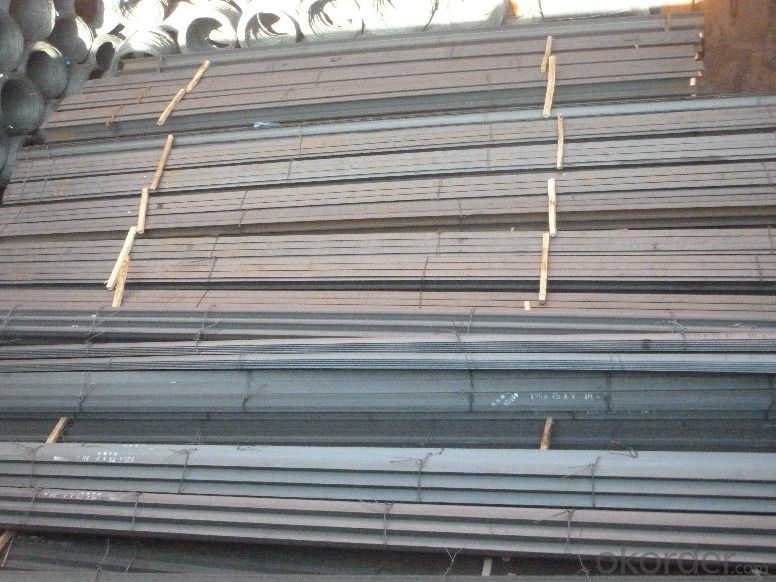
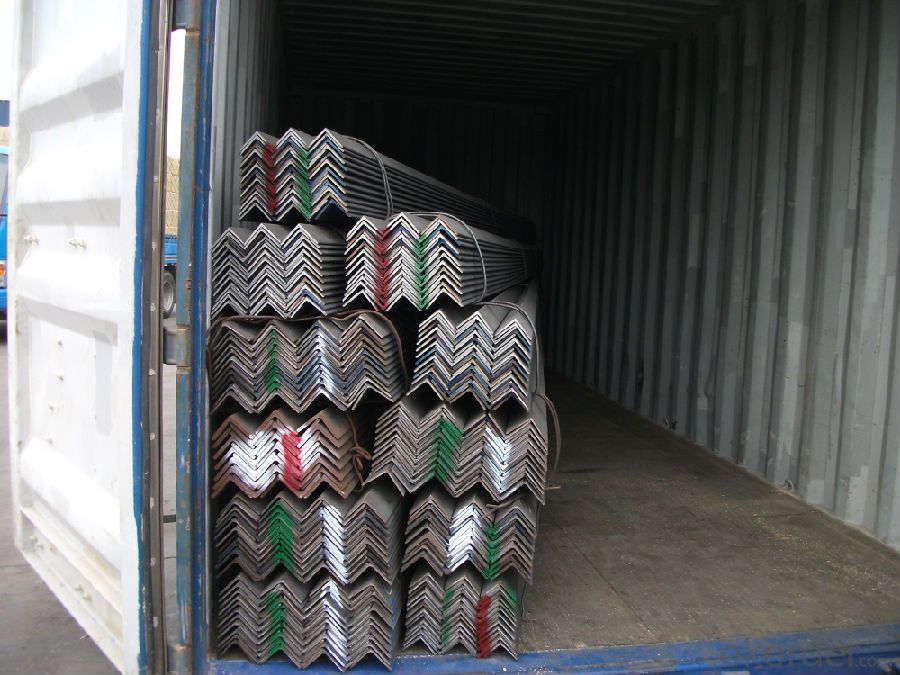
- Q: Can steel angles be used in marine or coastal environments?
- Yes, steel angles can be used in marine or coastal environments. However, it is important to choose the right type of steel that has corrosion resistance properties, such as stainless steel or galvanized steel, to ensure durability and prevent rusting or deterioration caused by the salty ocean air or water exposure. Additionally, proper maintenance and regular inspections are necessary to maintain the integrity of steel angles in these harsh environments.
- Q: What are the different types of connections used for steel angles?
- Steel angles can be connected in several ways, depending on the application and load requirements. Here are some commonly used connections: 1. Welded Connection: The most frequently used connection for steel angles involves welding them to other members, such as beams or columns. These connections offer high strength and stiffness, making them suitable for heavy loads and structural purposes. 2. Bolted Connection: Another option is to bolt the steel angles to the connected members using bolts and nuts. Bolted connections are preferred when the structure may need to be disassembled or relocated. They offer flexibility, adjustability, and easy installation. 3. Riveted Connection: While not as commonly used nowadays, riveted connections were widely employed in older structures. Riveting involves joining the steel angle to other members using rivets. Although they require skilled labor for installation, riveted connections provide good strength and durability. 4. Clip Connection: A clip connection is a type of bolted connection where a clip or bracket is used to secure the steel angle to the supporting member. This allows for easy assembly and disassembly, making it suitable for temporary structures or situations requiring frequent modifications. 5. Shear Connection: Shear connections use shear plates or angles to connect the steel angle to the supporting member. These connections primarily transfer shear forces and provide sufficient strength and rigidity. 6. Cleat Connection: Cleat connections involve using a cleat plate, typically welded or bolted, to connect the steel angle to the supporting member. Cleat connections are commonly employed in industrial applications where heavy loads and high forces need to be transferred. When selecting the appropriate type of connection for steel angles, it is crucial to consider the specific requirements of the structure, including load capacity, design codes, and environmental conditions. Consulting with a structural engineer or referring to relevant design standards can ensure the proper selection and installation of the connection.
- Q: Can steel angles be used for temporary structures or scaffolding?
- Yes, steel angles can be used for temporary structures or scaffolding. Steel angles are often utilized in construction projects for their strength and durability. They are commonly used to provide structural support and stability in temporary structures and scaffolding systems. Steel angles are versatile and can be easily welded, bolted, or fastened together to create a sturdy and safe temporary structure or scaffolding setup. Additionally, the availability of different sizes and thicknesses makes steel angles suitable for various temporary construction applications.
- Q: Are steel angles suitable for scaffolding?
- Certainly, scaffolding can indeed utilize steel angles. With their strength and durability, steel angles serve as an excellent option for bolstering hefty loads and ensuring stability at construction sites. By effortlessly connecting and assembling them, a steady structure for workers to reach elevated levels during construction or maintenance endeavors can be promptly established. Moreover, the versatility of steel angles permits diverse configurations and adjustments to cater to distinct project needs. Overall, steel angles are deemed as a dependable and frequently employed element within scaffolding systems.
- Q: Can steel angles be used for roof trusses?
- Indeed, roof trusses can be constructed using steel angles. These angles are frequently employed in the field of construction due to their robustness and resilience. By means of simple fabrication and installation, they can effectively establish the structure of roof trusses. Steel angles offer exceptional support and stability, rendering them appropriate for diverse roofing endeavors. Moreover, these angles possess the ability to endure substantial loads and unfavorable weather circumstances, thereby solidifying their reputation as a dependable option for roof trusses.
- Q: Double angle steel rod in the corners of the roof steel why need to set the plate?
- Pad is used to pad something to make it more convenient and comfortable things, commonly used in the examination to avoid paper directly on the table caused by writing difficulties of the board, are usually hard paper. In architecture, a plate member between the upper and lower two upper and lower two purlin Fang or architrave, thickness is usually a fight.
- Q: How do you calculate the slenderness ratio of a steel angle?
- To calculate the slenderness ratio of a steel angle, you need to determine the length and the moment of inertia of the angle section. The slenderness ratio is a measure of how slender or slender a member is, and it helps in determining its stability and ability to resist buckling. First, measure the length of the steel angle, which is the distance between its two ends. This length should be measured in the same unit as the dimensions of the angle section. Next, calculate the moment of inertia of the steel angle section. The moment of inertia is a measure of the section's resistance to bending and is typically denoted by the symbol "I". It depends on the dimensions of the angle section and can be obtained from reference tables or calculated using mathematical formulas. Once you have the length and moment of inertia of the steel angle, you can calculate the slenderness ratio using the formula: Slenderness ratio = (Length of angle) / (√(Moment of inertia)) Make sure the length and moment of inertia are expressed in the same unit before performing the calculation. The resulting slenderness ratio will be a dimensionless value. It is important to note that the slenderness ratio is used to determine the appropriate design criteria and allowable loads for the steel angle. Different design codes or standards may have specific limits or guidelines for the maximum slenderness ratio that can be used safely in different applications. Therefore, it is crucial to consult the relevant design codes or seek professional engineering advice to ensure the correct and safe use of the steel angle.
- Q: Can steel angles be used for load-bearing walls?
- Yes, steel angles can be used for load-bearing walls. Steel angles are commonly used in construction as a structural element to provide support and stability. They are often used to reinforce load-bearing walls by adding strength and rigidity. Steel angles can be used to distribute the weight of a load evenly, making them suitable for load-bearing applications. However, it is important to ensure that the steel angles are appropriately designed and installed to meet the specific load requirements of the wall. Consulting with a structural engineer or construction professional is recommended to ensure the proper use of steel angles for load-bearing walls.
- Q: Can steel angles be used in agricultural applications?
- Yes, steel angles can be used in agricultural applications. Steel angles are versatile and durable structural components that can be used in various agricultural applications such as constructing farm buildings, barns, sheds, and livestock enclosures. They provide strength and stability to the structures, making them suitable for withstanding the heavy loads and harsh weather conditions commonly found in agricultural environments. Additionally, steel angles can be easily welded or bolted together, allowing for flexibility and ease of construction. Their corrosion-resistant properties also make them ideal for outdoor agricultural applications where exposure to moisture and chemicals is common. Overall, steel angles are a reliable and cost-effective choice for agricultural construction needs.
- Q: Can steel angles be used in mezzanine flooring systems?
- Yes, steel angles can be used in mezzanine flooring systems. Steel angles are commonly used as structural elements in mezzanine construction due to their strength and durability. They can be used as supports, beams, or bracing members in mezzanine flooring systems, providing stability and load-bearing capacity. Steel angles are versatile and can be easily customized and installed to suit specific design requirements. They are also cost-effective and provide a reliable solution for creating additional floor space in industrial and commercial buildings.
Send your message to us
Prime Hot Rolled Angle Steel For Steel Structure
- Loading Port:
- China main port
- Payment Terms:
- TT OR LC
- Min Order Qty:
- 100 m.t.
- Supply Capability:
- 5000 m.t./month
OKorder Service Pledge
OKorder Financial Service
Similar products
Hot products
Hot Searches
Related keywords
